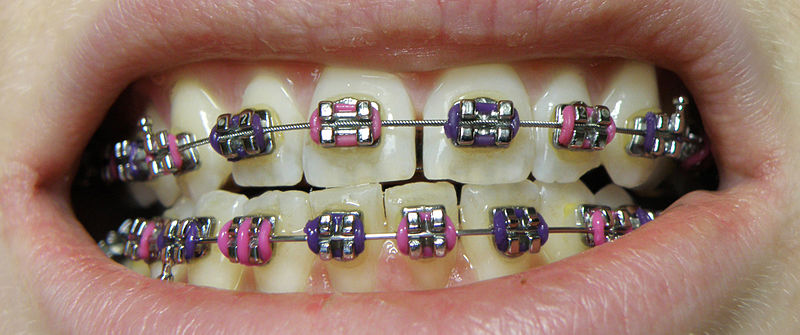Comprehensive Guide to Orthodontics Treatments for Fixing Dental Imbalances
In the realm of orthodontics, the trip to attaining a flawlessly aligned smile involves a myriad of treatments customized to fix dental imbalances. From standard dental braces to undetectable aligners and even surgical choices, the field of orthodontics uses a variety of remedies to deal with varying degrees of oral abnormalities. Comprehending the complexities of each procedure, including their systems, advantages, and potential drawbacks, is important in making educated decisions concerning one's orthodontic treatment. As we navigate via the comprehensive overview to orthodontic procedures for remedying dental imbalances, the elaborate details of each method will certainly unravel, dropping light on the path towards a harmonious and useful dental alignment.
Orthodontic Procedures Summary

In addition to standard dental braces and clear aligners, orthodontists may also suggest various other treatments like headgear, palatal expanders, or retainers to attend to details alignment problems (invisalign). These procedures are customized per patient's one-of-a-kind demands and may include a mix of therapies to accomplish the preferred outcomes. Routine changes and monitoring are crucial parts of orthodontic therapy to guarantee development is on track and to make any kind of essential alterations in the process. By undergoing orthodontic procedures, individuals can not only accomplish a straighter grin however also enhance their total oral health and function.
Traditional Dental Braces: Just How They Function
When considering orthodontic treatments for dental misalignments, conventional dental braces stand apart as a reliable method for fixing teeth positioning. Traditional dental braces consist of brackets, cords, and bands that function with each other to apply continuous pressure on the teeth, gradually relocating them into the preferred positioning. The brackets are affixed to the teeth utilizing a special adhesive, and the wires are threaded via the brackets. By adjusting the tension of the cords, orthodontists can manage the direction and force related to each tooth, leading them right into appropriate alignment over time.
As stress is applied to the teeth through the dental braces, the bone bordering the teeth is reshaped to support the new tooth placements. Clients will need normal changes at the orthodontist's office to guarantee the braces continue to use the right pressure for efficient teeth movement.
Unseen Aligners: Cons and pros
These clear, tailor-made trays are essentially undetectable when put on, making them an enticing choice for Visit This Link individuals seeking an extra cosmetically pleasing orthodontic treatment. Individuals can get rid of the aligners before consuming or brushing their teeth, minimizing the danger of food obtaining stuck in the home appliance and simplifying the cleansing procedure.

Surgical Orthodontic Options
Surgical interventions in orthodontics present practical options for resolving complex dental imbalances that might not be properly fixed through conventional orthodontic therapies. While standard braces and unseen aligners can correct several orthodontic problems, certain instances require medical treatment to achieve ideal results. Surgical orthodontic choices are generally recommended for severe malocclusions, substantial jaw inconsistencies, and cases where the underlying bone framework requires adjustment to attain correct positioning.
One common surgical orthodontic treatment is orthognathic surgical procedure, which involves rearranging the jaws to deal with functional issues such as difficulty eating or talking. This surgery is commonly executed in partnership with an orthodontist who assists straighten the teeth prior to and after the treatment. Surgical orthodontics might additionally entail procedures to reveal influenced teeth, remove excess periodontal tissue, or improve the jawbone to develop a more unified facial account.
Before thinking about surgical orthodontic choices, individuals undergo a detailed evaluation to figure out the need and potential benefits of such treatments. orthodontist. While surgical treatment might appear difficult, it can dramatically improve both the function and looks of the smile in cases where conventional orthodontic treatments fall short
Retainers and Post-Treatment Care

Post-treatment care entails complying with the orthodontist's guidelines diligently. This may include appropriate oral hygiene methods, attending follow-up visits, and putting on the retainers as recommended. Failure to follow post-treatment care instructions can result in relapse, where the teeth progressively relocate back dentist lookup in the direction of their initial placements. Regular retainer wear, great oral health, and routine dental check-ups are important for keeping the outcomes achieved with orthodontic surgical treatment and making sure the long-lasting security of the fixed oral placement.
Final Thought
Finally, orthodontic procedures supply various options for dealing with oral misalignments. Traditional braces utilize steel brackets and wires to move teeth into correct positioning. Undetectable aligners give an even more discreet choice but may not appropriate for all cases. Surgical orthodontic options are readily available for extra serious imbalances. Retainers are commonly used post-treatment to maintain the brand-new positioning. In general, orthodontic treatments can successfully boost dental health and wellness and visual appearance.
As we browse via the comprehensive guide to orthodontic procedures for fixing dental misalignments, the complex information of each approach will certainly unravel, dropping light on the course towards a useful and unified dental placement. - braces
One of the most usual orthodontic treatments is the usage of dental braces, which consist of steel braces and wires that apply mild stress to gradually move teeth into the wanted position.When thinking about orthodontic treatments for oral imbalances, conventional braces stand out as a tried and true technique for dealing with teeth positioning. In addition, invisible aligners may not be appropriate for complicated orthodontic problems that need even more considerable teeth movement, as they are normally recommended for light to modest cases. Retainers are custom-made orthodontic devices developed to hold teeth in their remedied positions after the completion of orthodontic therapy.